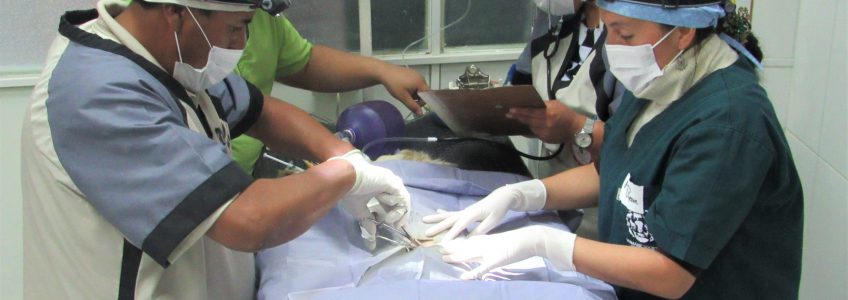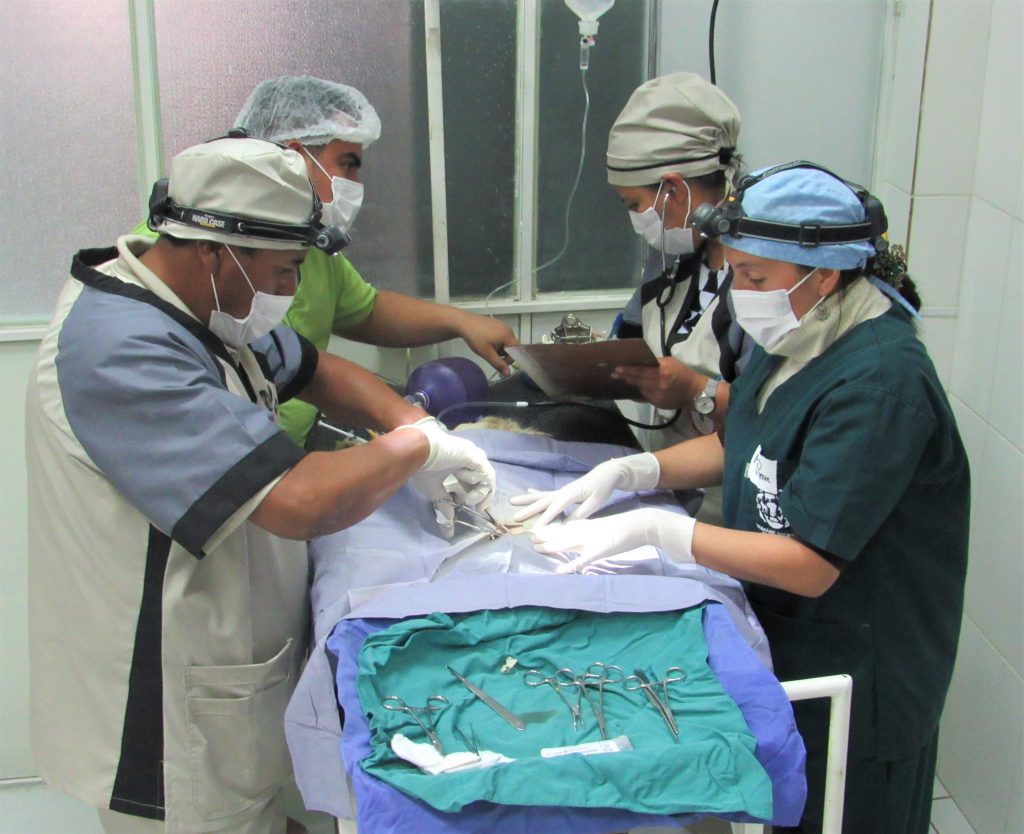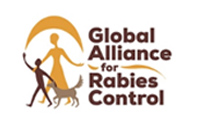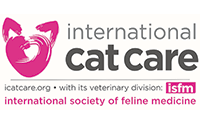
Introduction
A veterinary training pilot program was first introduced by HSI in Bolivia in 2014. The aim of the program was to offer training opportunities to veterinarians, technicians and students from across the region. This was to tackle the lack of veterinary knowledge of proper spay/neuter surgical techniques and protocols, which were leading to detrimental results including: loss of animals’ lives; long, difficult and often painful recovery; and the subsequent loss of trust among dog and cat owners in the benefits of spay/neuter surgery. For a spay/neuter program to be sustainable, the trust of pet owners must be gained with consistent quality, servicing client needs and communication. This has been achieved in Bolivia through training of veterinary professionals.
Creating a demand for training
Launched in 2014, HSI’s program trains veterinary professionals in high-quality spay/neuter surgery and provides instruction in client service and communication.
Dr. Selaya, trained by Dr. Susan Monger of International Veterinary Consultants, began working with HSI as a trainer to other veterinarians and technicians in a pilot project in La Paz, Bolivia – this has since expanded to training professionals from other Latin American countries.
Over time, government veterinarians appointed to run rabies control centers, have begun showing interest in working with the HSI team to strengthen their knowledge and better serve the animal populations in their jurisdictions. We also provide the only opportunity for veterinary students (who realize that their education is often inadequate) to join spay/neuter clinics, observe, and discuss with the team any questions, fears and uncertainties they have in their approach to surgery. Currently, we receive requests from universities for training of faculty members and teaching assistants who teach small animal surgery.
In addition to training, Dr. Selaya leads HSI’s spay/neuter program, which provides trainees the opportunity to actively participate in high quality/ high volume spay/neuter clinics. After receiving training, many veterinarians go on to join spay/neuter efforts with local animal welfare organizations and government-run dog and cat population management systems.
Training veterinarians generates a greater impact for animals
At present, besides the ongoing trainings of Bolivian professionals, HSI trains an average of five veterinarians a year from different countries across Latin America. Each veterinarian returns home to practice their skills, having addressed their weaknesses and reinforced their strengths. We follow their work and progress. Some are university professors, training future veterinarians in their country, and others have become university professors since the training. A few have gone back to their government jobs feeling more confident in their skills and ability to implement important changes to their protocols and processes.
Many HSI-trained veterinarians have partnered with other veterinarians and started their own spay/neuter initiatives. All of them have returned to their country better equipped to perform safer, quality-driven surgeries.
For example, in 2015, HSI was approached by the General Coordinator for Urbanimal, an animal welfare program of the Secretary of Health in Quito, Ecuador. Amongst his various roles, the General Coordinator was tasked with expanding the city’s spay/neuter program. HSI traveled to Quito and provided guidance on the program, and input on Urbanimal’s veterinary protocols. In addition, we trained two of their staff veterinarians on high-quality surgery. Both veterinarians have since reported making improvements to their protocols and even to the surgical technique. In January 2019, an online news agency from Quito reported that the Secretary of Health’s animal welfare programs had spayed/neutered over 17,000 dogs/cats the previous year. Link to news here.
Conclusion
The training of in-country veterinarians is important to the success of any effective private, or government-led dog or cat population management system. Training is essential to secure the long-term sustainability of the program and cannot be overlooked if the goal is to change the behavior of pet owners in accessing veterinary care for their pets, or to convince government that a humane population management system is viable.












